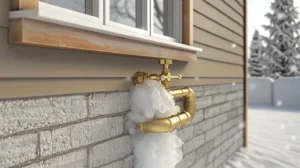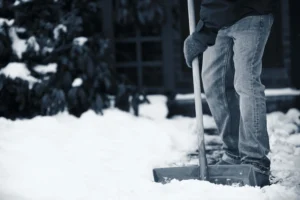Your home’s siding plays a crucial role in protecting it from the elements while giving your home its curb appeal. Over time, however, dirt, grime, and weather conditions can cause siding to lose its luster. Maintaining your siding regularly not only keeps your home looking fresh but also extends the lifespan of the material, helping you avoid costly repairs or replacements. Whether you have vinyl, wood, or fiber cement siding, here’s a guide to help you keep it clean, well-maintained, and looking its best.
Regular Cleaning for a Fresh Look
No matter what type of siding you have, regular cleaning is essential to keeping it looking fresh. Over time, dirt, mildew, and mold can accumulate, especially in areas with high humidity or heavy rainfall. Here’s how to clean different types of siding safely:
- Vinyl Siding: Vinyl is low-maintenance but benefits from a good cleaning once or twice a year. Use a garden hose or a pressure washer on a low setting to wash away surface dirt. For tougher grime, mix a solution of water and mild dish soap, and use a soft-bristle brush or sponge to scrub gently. Rinse thoroughly with water. Avoid using harsh chemicals or high-pressure washing that can damage the siding.
- Wood Siding: Wood is beautiful but requires a bit more attention. Clean it with a soft brush and a mild soap solution to remove dirt and prevent mildew. Make sure to rinse with water, as soap residue can attract more dirt. Be sure not to over-soak the wood, as excess moisture can lead to rot. It’s also a good idea to inspect the wood for any signs of mold, mildew, or insects while cleaning.
- Fiber Cement Siding: This durable material is easy to clean using a garden hose and a soft brush or cloth. Avoid using a pressure washer, as it can damage the finish. For tough stains, you can use a mixture of water and a non-abrasive cleaner. Rinse thoroughly to prevent any residue from sitting on the surface.
Cleaning your siding regularly helps maintain its appearance, keeps dirt from settling, and can prevent longer-term issues like mold growth.
Inspect for Damage or Wear
Regular inspections of your siding can help you catch small problems before they turn into costly repairs. Look for signs of damage such as:
- Cracks or gaps
- Warped or buckled boards
- Loose or missing panels
- Peeling paint (for wood siding)
- Signs of mold, mildew, or algae growth
Pay close attention to corners, edges, and areas around windows and doors, as these are more susceptible to water damage or wear. If you spot any problems, address them promptly to prevent water from seeping behind the siding and causing structural damage.
Protect and Seal Wood Siding
If your home has wood siding, sealing and staining or painting it regularly is key to preventing water damage and wood rot. Depending on your climate, wood siding may need to be repainted or restained every 3-7 years to keep it protected from moisture and UV rays. When it’s time to repaint or stain:
- Prep the surface: Start by cleaning the siding thoroughly and sanding down any rough or peeling areas.
- Choose the right paint or stain: Use high-quality, exterior-grade paints or stains designed for wood siding. Stains tend to penetrate the wood better and last longer than paint.
- Apply sealant: For additional protection, apply a water-repellent sealant after painting or staining to help protect against moisture.
Regularly painting or staining your wood siding not only enhances its appearance but also extends its lifespan by keeping it protected from the elements.
Check and Maintain Caulking
The caulking around windows, doors, and joints where siding meets other materials is crucial for keeping water out of your home. Over time, caulk can dry out, crack, or shrink, which can lead to leaks and water damage. Inspect these areas annually and replace any damaged or missing caulking.
To re-caulk:
- Remove the old caulking using a putty knife or scraper.
- Clean the area to ensure proper adhesion.
- Apply a new bead of exterior-grade, waterproof caulk to seal the gaps.
A fresh line of caulk not only protects your home from water infiltration but also gives your siding a neat, finished appearance.
Prevent Mold and Mildew Growth
Mold and mildew can form on siding, especially in damp or shaded areas. To prevent these unsightly growths from taking hold, take the following steps:
- Trim trees and bushes: Keep landscaping trimmed away from your siding to allow for proper airflow and sunlight, which can help keep your siding dry.
- Address drainage issues: Make sure your downspouts and gutters are directing water away from your home’s foundation and siding. Pooling water can lead to mold and mildew growth, especially in humid climates.
- Apply a mildew-resistant solution: If mold or mildew appears, clean it using a solution of water and white vinegar or a commercial mold remover. Rinse thoroughly and keep an eye on problem areas in the future.
Avoid Impact Damage
Accidents happen, but impact damage from lawn equipment, sports, or even hail can take a toll on your siding over time. To minimize the risk:
- Be mindful when mowing or trimming: Avoid hitting your siding with lawn equipment or tools, as this can cause dents or cracks.
- Store tools safely: Keep gardening tools, ladders, and other potentially damaging objects away from the siding.
- Address minor damage quickly: If you notice small dents, cracks, or holes, repair them quickly to prevent water infiltration or further damage.
Keep an Eye on Gutters and Downspouts
Gutters and downspouts play a critical role in directing rainwater away from your siding and foundation. Clogged or damaged gutters can lead to water spilling over the edges and onto your siding, potentially causing mold, mildew, or water damage.
Clean your gutters regularly and inspect them for leaks or damage. Ensure that water is being directed away from your home and that downspouts are extended far enough to prevent water from pooling around the base of your house.
Schedule Professional Maintenance When Needed
While many siding maintenance tasks can be done by homeowners, there are times when you’ll need professional help. If you notice significant damage or deterioration, it’s best to call in a professional to assess the situation. They can provide expert guidance on repairs or replacements and ensure that your siding remains in good condition for years to come.
Final Thoughts: Keep Your Siding Looking Fresh and Strong
Maintaining your home’s siding doesn’t have to be a daunting task. With regular cleaning, timely repairs, and smart preventative measures, you can keep your siding looking fresh and protect it from damage. Whether you’re dealing with vinyl, wood, or fiber cement siding, these tips will help ensure that your home stays beautiful and well-protected from the elements. A little effort now will save you time and money in the long run—and keep your home looking its best!









